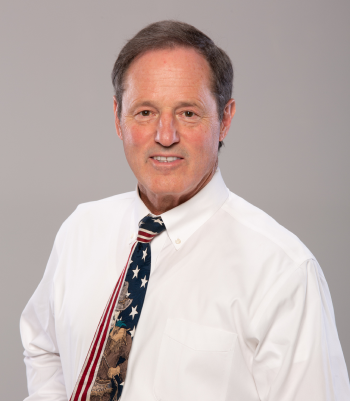James R. Rappaport, M.D.
- Board Certified – Fellowship Trained Spinal Surgeon
- Assistant Clinical Professor at University of Nevada
- Commander, United States Navy (Retired)
- U.S. Ski Team Physician


James R. Rappaport, M.D.
- About
- Education
- Honors & Awards
- Publications
Biography
Dr. Rappaport has been in practice, academic and private since 1986.
He believes in conservative approach to spine problems. Dr. Rappaport is a strong proponent of education and participates as a clinic instructor of the University of Nevada Reno Family practice and fellowship training programs. Dr. Rappaport also invites residents and medical students to intern with Sierra Regional Spine for educational purposes.
Dr Rappaport believes in a conservative approach. He prefers to exhaust all non surgical treatment before performing surgery. Providing High Tech care with old fashioned caring.
Medical Licensure
- Nevada
- California
- Texas
- Alaska
Professional Memberships




- Spinal Surgery Representative, U.S. Department of Defense
- American Board of Orthopedic Surgery
- American Academy of Orthopaedic Surgeons
- American Back Society
- American Board of Forensic Examiners
- Citizens Homeland Security Council, Washoe County
- Nevada State Medical Association
- California Orthopaedic Association
- Washoe County Medical Society
- Bay Area Spine Society
- American Medical Association
- Ret. Commander of the U.S. Navy
- Assistant Clinical Professor for the University of Nevada Reno
Personal Affiliation


Education
Spinal Surgery Fellowship
John O’Brien, Ph.D., F.R.C.S., F.A.C.S.
London Clinic 20 Devonshire Place,London, W1G 6BW
T: +44(0)20 7935 4444
Spinal Surgery Fellowship
Spinal Surgery Fellowship, Texas Institute for Spinal Disorders
Director: Alexander E. Brodsky, M.D., Baylor University
St. Luke’s Episcopal Hospital, Texas Medical Center
2450 Holcombe Blvd, Ste 1, Houston, Texas 77021
T: 713-791-6161
Orthopaedic Surgery Residency
University of California
55 Laguna Street, San Francisco, California 94102-6232
T: 415-252-3016
Medicine
University of California School of Medicine, (M.D.)
55 Laguna Street, San Francisco, California 94102-6232
T: 415-252-3016
Bachelor of Science
Stanford University, Bachelor of Science – Biology
Stanford, California 94305
T: (650) 723 2300
High School
Ed Modena High School, Orange, California
High School
Villa Park High School, Villa Park, California
Honors & Awards
- University of Nevada - Dept. Of Family and Community Medicine, Reno. Family Medicine Residency Program, Faculty Recognition Award, 2002.
- Fife Award for Scholarship in Surgery, 1980 University of California Medical School, San Francisco
- Kappa Sigma Award for Leadership and Scholarship, 1976 Stanford University, Stanford, California
Appointments
Northern Nevada Representative
Nevada State Medical Association
Principal Investigator
Medtronic Evolve Study
Principal Investigator (2005 - present)
Kineflex™ Lumbar and Cervical Disc Replacement, Clinical Trials, St Mary’s
Regional Medical Center, Reno, NV., 2005 to present
Principal Investigator
Benvenue “KIVA” Study
Team Physician (1998 to present)
U.S. Ski and Snowboard Association
Assistant Clinical Professor
University of Nevada, Reno 2002 – Current
Assistant Clinical Professor, University of California, San Francisco 1987 – 1996
Chairman
American Back Society (Annual Meeting 1998, 1999)
Commander
U.S. Navy Reserve – Retired
Attending Physician
Spine Center, University of California,
San Francisco General Hospital, 1986 – 1993
Assistant Clinical Instructor
Orthopaedic Surgery, Baylor College of Medicine
Houston, Texas, July 1986
Spinal Surgery Representative
United States Department of Defense
Spine Center of Excellence Project, 1999 – 2000, Washington, D.C.
Courtesy Staff Physician
San Francisco State University Football, 1983
Staff Physician & Surgical Consultant
Sequoia Hospital, 1988
Surgical Consultant
Presentations
Northeastern Nevada Regional Hospital. “Treating Vetebral Compression Fractures and Improving Quality of Life.” Elko, NV. October 10, 2013.
American Back Society Annual Meeting. “Minimally Invasive Lumbar Disc Surgery” Las Vegas, NV June 18-20, 2008
20th Contemporary Update on Spinal Disorders. “Sacroiliac Dysfunction after Lumbar Fusion,” Whistler, British Columbia, Canada January 19-23, 2008.
American Back Society Annual Meeting. “Return to Sport After Cervical Spine Injury,” Las Vegas, NV May 2007.
Spine Network of California “Less Invasive Lumbar Discectomy,” Las Vegas, NV October 19-20 2007
Spine Specialist Advanced Training Course. Lecture, “Anatomy and Physiology of Spinal Disc and Bone,”
San Diego, California, February 13, 2006.
Washoe Medical Center CME Committee, Lecture, “High Tech Care Old Fashioned Caring,” November 16, 2005.
University of South Florida Annual Spine Conference. Moderator: Artificial Disc Replacement Panel and Instructor: Hands on Laboratory Skills for Coblation Technology. Whistler, B.C. January 17-22, 2005.
Nevada Chiropractic Association. Lecturer: “Spinal Cord Injury Update”. Reno, NV December 4, 2004
Surgeon Training course. “Kyphoplasty”. Minneapolis, MN. November 5, 2004.
7th Annual Spine Conference. “Spine Pathology: An Update”. Spinal Cord Injuries South Lake Tahoe, California. September 25, 2004.
4th Annual Complex Case Spine Symposium: Less Invasive Microdiscectomy. Olympic Valley, CA., April 4, 2004
Advanced Concepts in Minimally Invasive Vertebral Compression Fracture Management. Texas Medical Center, Houston, TX. February 28, 2004
Symposium Moderator. “Update on Spinal Cord Injury”
16th Annual Update on Disorders of the Spine. “Minimally Invasive Lumbar Discectomy” -lecture and lab. Whistler, BC January 17-23, 2004
Kyphoplasty, Surgeons Training Course – Faculty. Minneapolis, Minnesota, November 7, 2003
Neurosurgical & Orthopedic – Faculty. Graduating Spine Surgery Fellows Course “Current Concepts in Vertebral Fracture Management”, Memphis, Tennessee September 5, 2003
Kyphoplasty, Surgeons Training Course – Faculty. Stanford University, California August 15, 2003
World Spine Congress – Faculty. “Minimally Invasive Spine Symposium”
Chicago, Illinois, August 10, 2003
American Academy of Orthopedic Surgeons – Learning Center Lecturer, Rosemont, Illinois Coblation Assisted Microdiscectomy, November 11, 2003
Percutaneous Discectomy, Lecture and lab. November 11, 2003
48th Annual Visiting Professorship, Leroy C. Abbott Society
“Coblation Assisted Microdiscectomy “University of California, San Francisco, May 2, 2003
Kyphoplasty
Reno, NV March 2003
15th Annual Contemporary Update on Disorders of the Spine. University of South Florida, January 18-24, 2003 “Minimally Invasive Lumbar Discectomy.” Whistler, BC
15th Annual Contemporary Update on Disorders of the Spine.
“The Future of Spinal Cord Injury Treatment” Whistler, B.C. January 2003.
North American Spine Society Annual Meeting “Axial Cage: A New Device for Treatment of Spondylolisthesis” Scientific Poster Exhibit – Seattle, Washington 2003
“Axial Cage: A new device for an old procedure” Poster Presentation, American Academy of Orthopedic Surgeons, 2004.
Emerging Technologies in Spinal Surgery Conference. “Coblation Assisted Minimally Invasive Microdiscectomy” Washington, D.C. October 2002.
14th Annual Contemporary Update on Disorders of the Spine
“Future Treatment of Spinal Cord Injury” University of South Florida, January 2002.
The American Back Society. “Kyphoplasty – Technique and Results”
Vancouver, Canada December 2001
Sierra Valley Spine Society. “A History of Anterior Lumbar Surgery”
Squaw Valley USA, April 2001
Surgical Consideration in the Osteoporitic Spine, January 2001
University of South Florida
University of Southern Florida – Spine Center Course
Axial Cage for Spondylolisthesis – A New Technique, January 2001
“Anterior Lumbar Fusion” – Advances and Techniques
University Medical School, Bialystok, Poland March 1998
American Back Society. “Anterior Lumbar Fusions – Concepts and Advances.” Las Vegas, Nevada 1998
University of California. “Anterior Cervical Discectomy and Fusions – Technical Aspects.” San Francisco, California October 1997
SPINETECH BAK Surgical Course
Faculty, Sacramento, California, November 1997
“Current Concepts of European Spine Practice”
Baylor University, April 1988
Stanford University of Orthopaedic Grand Rounds, “Pathogenesis and Treatment of the Degenerative Lumbar Disc” November 1988
American Academy of Orthopaedic Surgeons. “Treatment of Proximal Humerus Fractures” San Francisco, California 1987
University of California Rounds “Locating the Offending Disc,” Rappaport, J. Weitz, E. November 1983
Publications
Rappaport, James R. MD. Site Investigator and member of research team. “KAST Study: The Kiva System As a Vertebral Augmentation Treatment- A Safety and Effectiveness Trial.” SPINE, VOL 40, No 12 June 2015.
Rappaport, J.: “Kineflex/C Cervical Artificial Disc” Motion Preservation Surgery of the Spine, Advanced Techniques and Controversies, Chapter 31, pages 258-268. Yue, James, J. et al. Saunders Elsevier 2008
Alamin, T., Rappaport, J.: “Coblation-Assisted Microdisc (CAM) Improving a Gold Standard”
Research Outcomes in Spine Surgery, January 2003
Rappaport, J.: “Less Invasive Microdiscectomy Improving a Gold Standard”
Research Outcomes in Spine Surgery, October 2002
Rappaport, J., Weitz, E.: “Locating the Offending Lumbar Disc.” Videotape
University of California Publications, 1983
Rappaport, J., Maurer, R., Nicholar, R.: “Surgical Treatment of Bone Infection”
Abbott Society Proceedings, June, 1985
Rappaport, J., Day, L.: “Conservative vs. Surgical Treatment of Long Bone Fracture.”
Abbott Society Proceedings, June 1985
Rappaport, J. Weitz, E.: “Locating the Offending Disc,” Video, University of California San Francisco Medical Library, November 1983
Rappaport, I., Rappaport, J.: “Congenital Arteriovenous Fistula of the Maxillofacial Region”
American Journal of Surgery, Vol. 134, July, 1977
FDA Clinical Trials
- KAST Study: The Kiva System Safety and Effectiveness Trial
- EVOLVE Study with Medtronic
- Kineflex Cervical and Lumbar Disc Arthroplasties
- Benevenue “KIVA” Compression Fracture study
Patents Owned or Pending
- Kyphoplasty Directional Cement Delivery Device, co-holder with Kyphon Inc.
-
Fusion Beam, a medical device for spinal fusion
-Original design clinical research and implementation

“Just a great experience. Dr Rappaport is very skilled and knowledgeable, his office staff as well. Quick, accurate work-up, great plan of action, feel much better! Complete confidence in their care and would not consider going anywhere else!”

“Dr. Rappaport is a caring and knowledgeable professional. His patience and kindness will help you find the right procedure for complete relief from pain. My Interlaminar Lumbar Instrumented Fusion (ILIF) procedure was accomplished with a short period of recovery without any negative consequences. I would highly recommend this surgeon.”

“Dr. Rappaport and his staff are so welcoming, nice, knowledgeable and thorough. Love the well dressed and kind male receptionist as well. Dr. Rappaport knows his stuff. He did the best job ever on my husband's spine. A very complex operation made easy for us. Complete satisfaction my husband says regarding his operation experience. Thank you for your excellent care.”

“Dr Rappaport is amazing, my savior. I was involved in a car accident that caused major damage to my neck and it caused my left arm to be useless. I also had emergency surgery on something unrelated a month earlier. My life was pretty much upside down. Surgery on my neck was a fantastic relief, not going to lie, recovery was a little tough but well worth it. I really liked this doctor and staff a lot!”